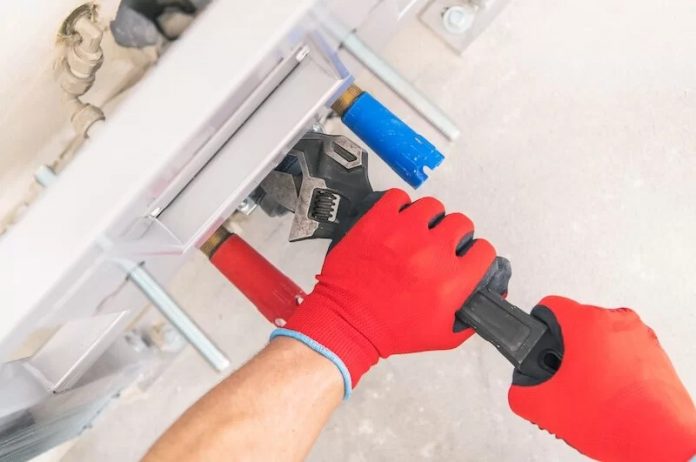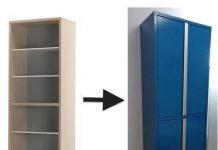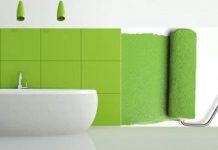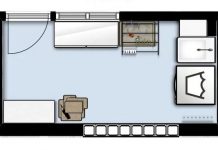
If you have a mysterious bulge in the floor, the paint has peeled off one of your walls, or you have noticed an unusual increase in your water bill, it is very likely that you have a water leak in your home. If you want to know how solve the most common water leaks in the homedo not miss this bricoguide.
A water leak, moreover, is one of the main causes of loss of hundreds of liters of drinking water, a very precious and at the same time scarce commodity on our planet. It can cause problems and damage to your home and those of the adjoining apartments, so it is essential to protect your home against damage with home insurance that takes care of accidental leaks, broken pipes or repair of sanitary devices. But it is also very important that we know how to detect this type of leak to avoid wasting water.
Most common water leaks in the house
Water leaks in the home are more frequent than you might imagine, even higher than theft and glass breakage. When it comes to solving this type of breakdown, the first thing you should do is locate where it comes from and what is the main cause. The most common with which you can find -in fact, I have personally suffered some of them-, they are the ones indicated below.
In the bathroom
In the bathroom, water leaks can originate from a drain or a pipe. In my specific case, the water leaked to the lower floor, causing damage to the neighbor. In addition, the humidity caused the paint to chip off one of the walls adjoining the bathroom. Although at first it was thought that it could come from the shower drain, after the renovation of the bathroom and elimination of the bidet, it was detected that the problem was caused by a badly connected pipe.
Another common leak point in bathrooms is the loss of water through taps, stopcocks and toilets. Placing a dry rag around a faucet or stopcock and checking to see if it gets wet will help you spot leaks. On the other hand, did you know that a leaky toilet can lose up to five thousand liters of drinking water per month? Without a doubt, it is a fact that is alarming enough for us to remedy it as soon as possible.

In the kitchen
In the kitchen, the most common faults are usually located in the sink, the water heater, in pipes, or in the drains and connections of some appliances such as the washing machine or dishwasher. There are some signs that will help you detect them:
- A bulge in the ground can reveal a broken pipe. In my case, we had a problem after changing the faucet in the sink and not fitting one of the gaskets correctly. This fact caused the water to seep under the vinyl floor tiles and overflow through the joints when walking on it.
- Hearing the water running when you’re not using any appliances or sinks can be another symptom of a leak. Try closing the stopcocks and check if you can still hear the noise of the water.
- If your water heater won’t shut off when you’re not using it, or there’s a loss of pressure in the boiler, it may be due to a leak.

heating/air conditioning
To find out if there are water leaks in a radiant floor installation, we must observe if there are damp or water stains. On the other hand, if we have a heating installation with radiators, we must check if they leak and form a puddle on the floor. In my case, I detected such a leak because the parquet was raised slightly.
Another leak point is usually the heating circuit drain valve. It is normally located on the floor of the bathroom, terrace, gallery or kitchen and is used to empty the entire heating circuit when necessary (breakdown, cleaning, etc.). Over time, it can become worn and have water leaks that make the circuit not maintain adequate pressure.
In the case of air conditioning installations, water leaks are usually caused by blocked drains, lack of gas or because the filters are dirty. To detect and avoid them, it is best to carry out periodic maintenance of this type of installation.

hidden leaks
Some leaks are not visible to the naked eye, in fact around 70% of those that occur are hidden under the floor or walls. By going unnoticed, it usually takes longer to detect them and their damage is greater. Dark damp spots, discolored areas, an unjustified increase in water consumption or the fact that the water meter continues to run despite having closed the stopcock, are obvious signs that there is a hidden leak in your home.

Solutions to water leaks
Once the origin of the fault has been identified, there are different solutions depending on the problem:
- Regularly cleaning the drains in your home will prevent the formation of solids that can cause perforations in the pipes and the corresponding leak. To do this, pour half a cup of baking soda down the drain, followed by half a cup of vinegar, and wait about 20 minutes. Finally, pour boiling water to wash away all the dirt that may have accumulated in the pipes.
- If you change any faucet, make sure to properly seal the threaded joints with gaskets or Teflon thread. It is also convenient to place a container under the siphon for the first 24 hours of use to check that there are no water leaks.
- Review and replace, where appropriate, the silicone gaskets of the shower tray or bathtub to prevent water from leaking.
- If you detect that the toilet is leaking, close the stopcock and repair the leak before the water bill is triggered.
- Replace the washing machine and dishwasher hoses every four or five years and leave a safety distance of about 10 cm between the appliance and the water connection to prolong its useful life.
- In addition to contracting the periodic maintenance of the heating and air conditioning installations, check once a month that there have been no alterations or changes in the floors and walls of the house.
- If there are damp spots on the walls, remove them after repairing the leak by scratching the paint and applying an anti-damp treatment before repainting.
- If the water has moistened the wood of your furniture, do not expose it to the sun. A sudden change in temperature can cause cracks and fissures in the wood.
- To locate hidden leaks, you can use thermographic cameras that color changes in temperature with different intensities of tone, humidity scanners, listening equipment and the use of georadar to locate the exact point of the leak and carry out as little work as possible.
Finally, it should be noted that the damage caused by water leaks, leaks or floods can be quite serious. For this reason, it is very important to have home insurance that covers both damage to the floor, walls or ceilings, as well as the affected furnishings and fixtures.

I hope all these tips will help you. detect water leaks in your home and solve them to avoid major damage. If you have found this article useful, you can find many more guides on DIY and decoration at .



